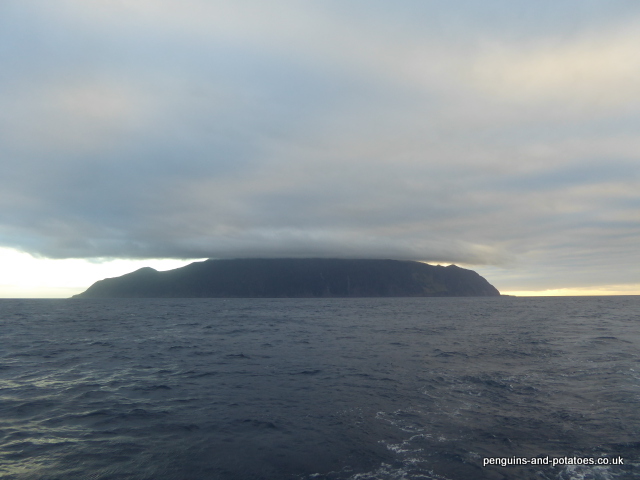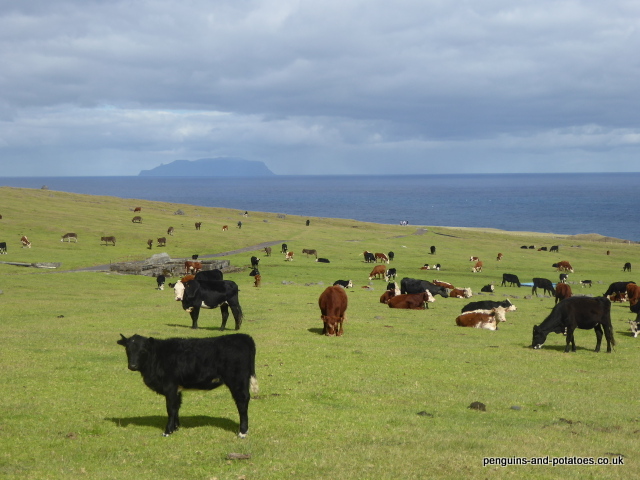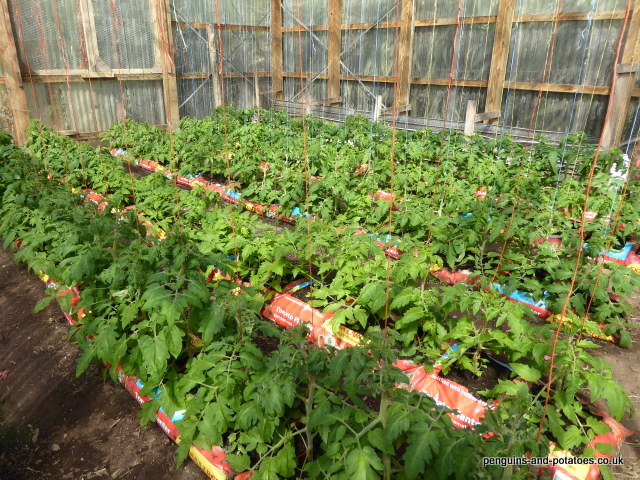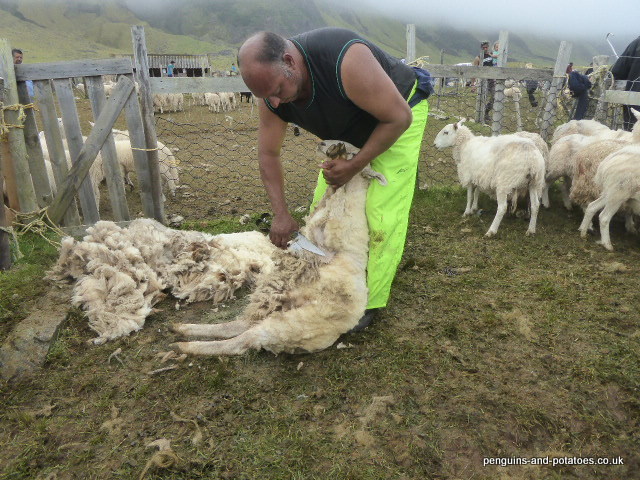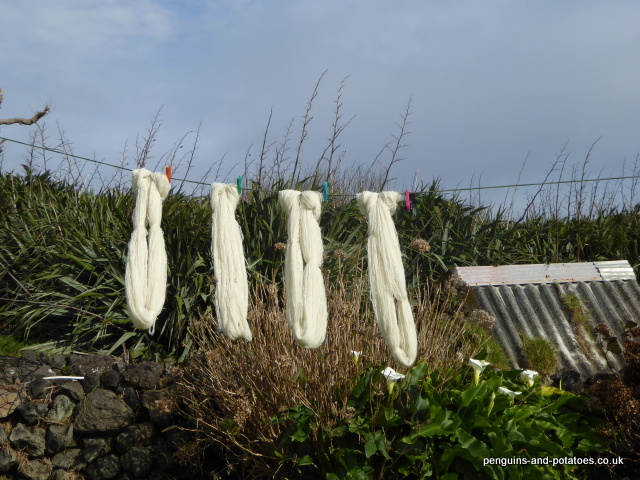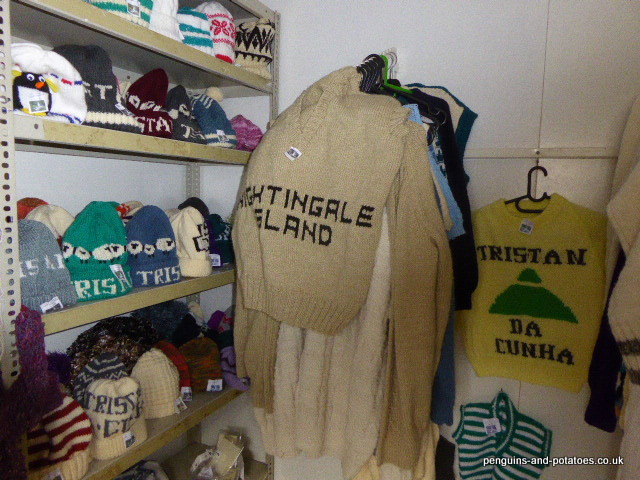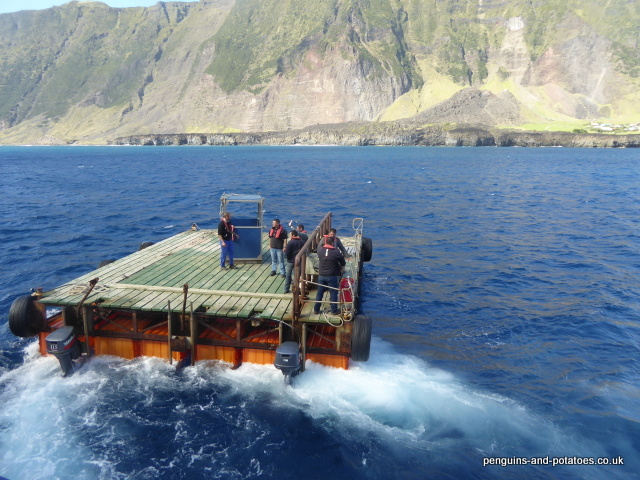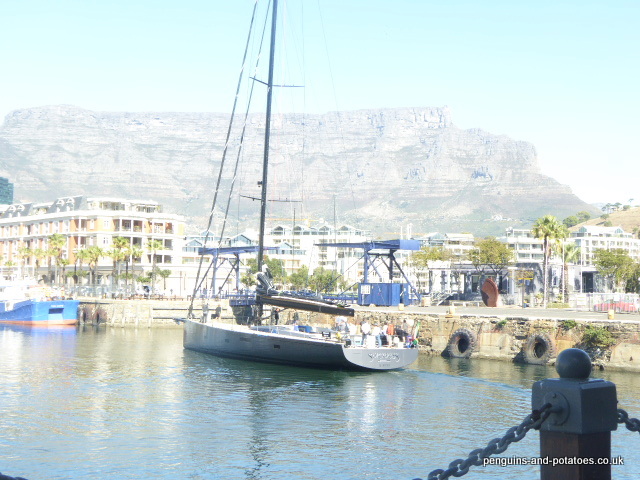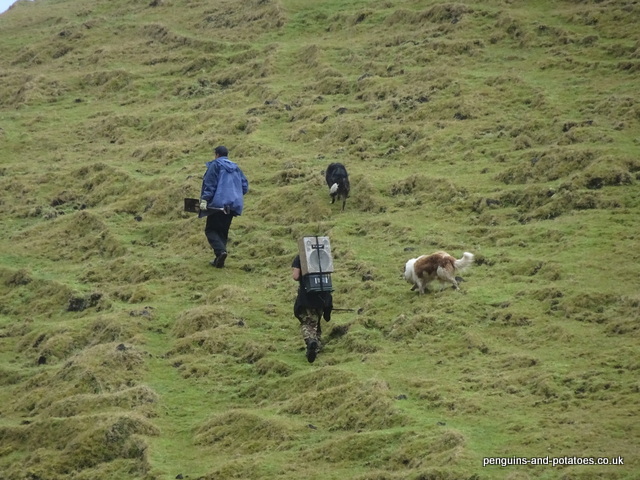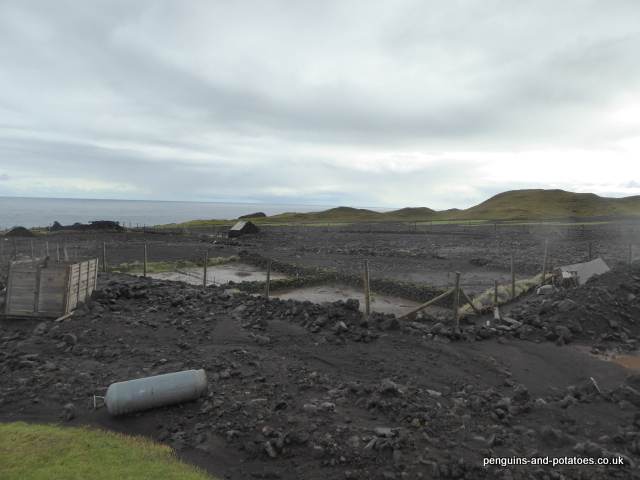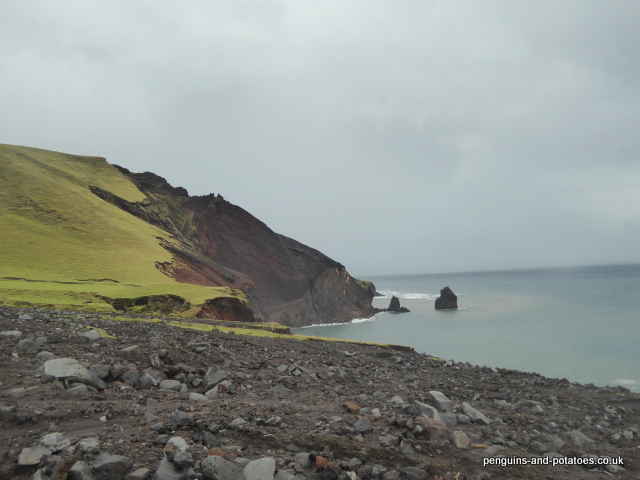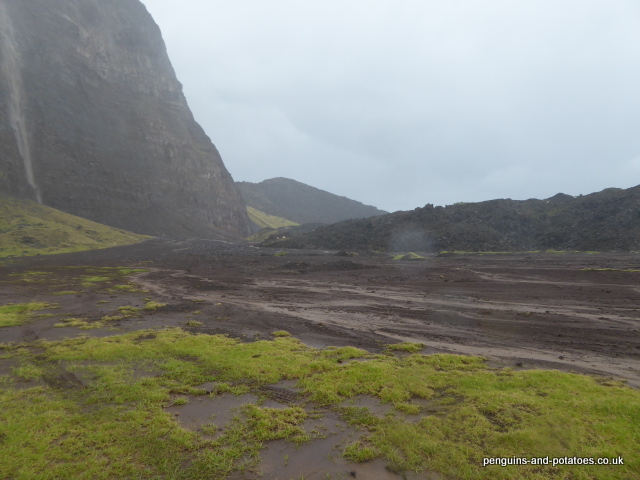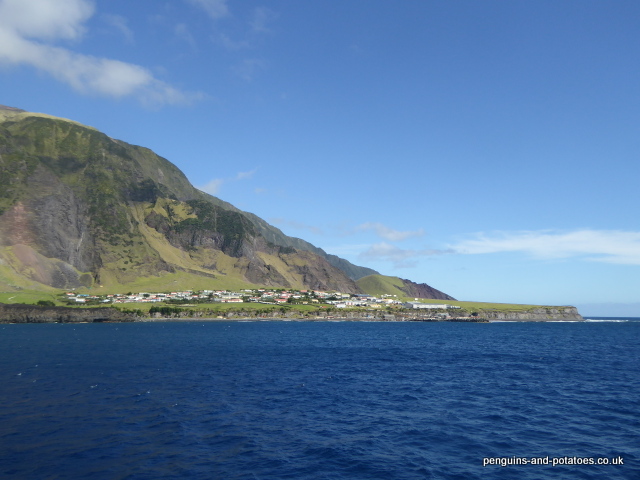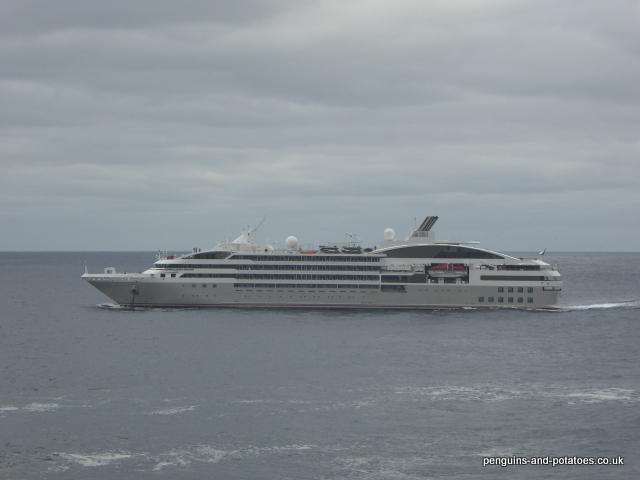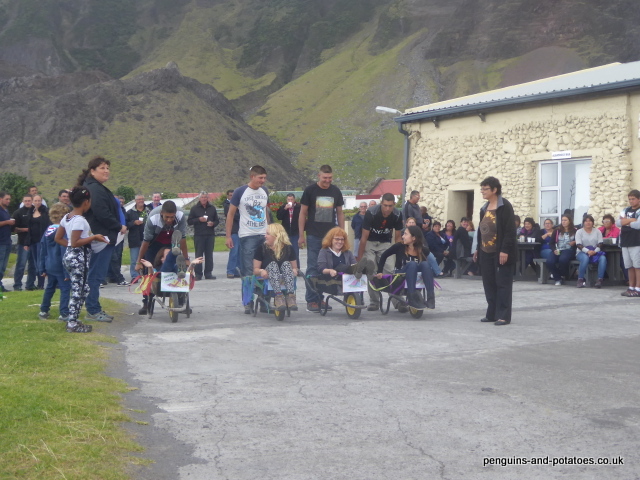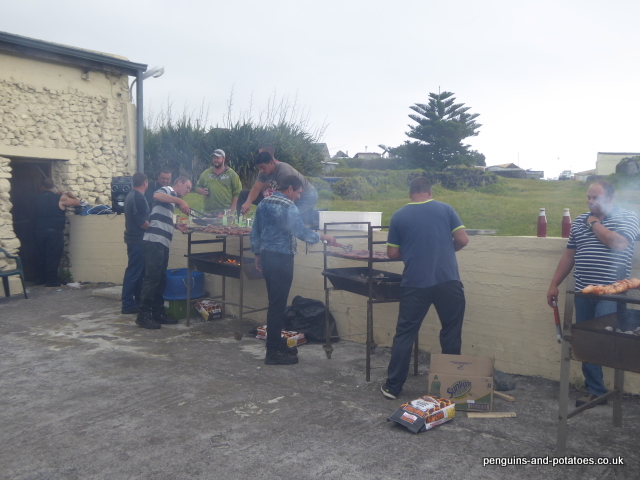As you will find in any small community, it is quite easy here on Tristan for rumours and incorrect information to start circulating. In facing up to the reality of the situation, I have just put out a ‘Farming News’ paper, which has gone down exceptionally well. It gives folk a ‘from the horse’s mouth’ idea as to what we are trying to do, and I have had a number of people coming along with seeds for us to propagate. This is what I put out in the community:-
TDC Farming News Issue 1 October 2017
The Department of Agriculture is aiming to publish a newsletter like this one from time to time. If anyone would like us to comment on any specific farming topic, please let us know.
Greenhouses and Mission Gardens
In recent months we have been able to make considerable progress on production in these garden areas. As well as growing plants that will produce food crops for sale, such as tomatoes, we are also growing plants that will end up being sold in the Agri Shop. These plants fall into three categories – indoor ornamental plants, outdoor ornamental plants, and plants for food production – all this is part of our mission to supply a service to the community. The thinking behind the production of vegetable plants for sale is that we have the facilities and skills to produce a range of strong, healthy plants that can be transplanted into peoples’ gardens when they are big enough to be able to withstand the many insects that are waiting to attack seedlings, and people will probably like being able to ‘kick start’ their own vegetable production without the risk of loosing small vulnerable seedlings.
The recent sale of tomato plants has been a big success. We hope to be able to follow up with cabbage, cauliflower and broccoli plants very soon. Keep an eye open for our notices as to what is coming into the shop. If anyone would like us to propagate any particular plants in the greenhouse, do please let us know.
Lime and Fertiliser
You may have noticed our team busy spreading fertiliser and lime in some of the pasture areas. This is part of an ambitious long-term programme to improve the grass production on the island, in order to help increase the feed available for the cattle.
Lime is being applied in order to raise the pH of the soil. A low pH means acid soil, and grass grows badly on ground that is acid. A pH of 6.5 to 7.0 is ideal for productive grasses, but many of the pastures are currently below 5.5.
I have been asked whether there is any problem with cattle grazing land that has been recently fertilised or limed. The fertiliser that we are using at present is prilled urea, specifically adding nitrogen. In some countries both urea and lime is deliberately added to cattle feed, and there will be no problem with cattle grazing on land that has been recently limed or fertilised with urea.
Bulls
The very good news is that we are soon due to take delivery of two new bulls from South Africa. These are both Aberdeen Angus, one being a black Angus and the other a red Angus. We expect that these will be with us in time for the 2018 breeding season.
These two bulls will be key in improving the cattle blood-lines on the island. In the coming two months we should see the new calves born from the recent AI programme, and we look forward to seeing whether any cross-bred bull calves produced from AI are good enough to select for breeding in the future. In the meantime, with the new bulls quality natural breeding will be assured.
Ear Tags
Some months ago the decision was made to identify cattle using ear tags, which will be pivotal to us being able to keep proper records, and for the identity of animals being followed from birth to death. Any people who watch Countryfile will be familiar with this sort of ear tag. The ear tags have now arrived on the island.
Each animal will be tagged twice, with a large tag on one side and a little button tag on the other side, both tags displaying the same number which will be the ID of the animal.
It is not intended that the ear tags will necessarily replace the traditional system of ear marking – it will be up to the individual owner to choose whether to ear-mark his calves as well, or whether to rely on the ID provided by the ear tags. We will of course be keeping a detailed record of each ear tag number, so that for example in the event that an animal is given or sold by one owner to another, the records will be updated to show the new owner.
It will take some time before we are able to obtain full benefit from the ear tag system. For example, once calves that are as yet unborn are tagged and fully mature the records that can then be referred to will be invaluable for the community and for the individual owner.
New Tractor
We are very pleased to be able to report that we have taken delivery of a new 4WD tractor, and this machine has now been commissioned and put into service.
Being brand new, this machine has the whole of its working life ahead of it. We feel that the tractor is a very sound investment that will play a key role in the important farming developments that are programmed. The tractor is a Massey Ferguson, and the controls are largely the same as the old 135’s and 240’s that are on the island, and are therefore familiar to our staff.
Livestock Mineral Deficiencies
Our visiting vet, Joe Hollins, has done some very interesting work by collating and analysing the results of blood and tissue samples taken from island livestock over a number of years
Joe has identified that there are substantial mineral deficiencies that are having a negative effect on the health of the livestock.
As a result, a consignment of salt / mineral blocks has been ordered and now received and distributed, and we are working through the herd to administer mineral boluses (stomach pills).
Alasdair Wyllie – Agricultural Adviser and Editor of TDC Farming News

